MEASURES - Winter diving in Mura River
17-01-2020
No matter the subject or field of science, all biological and other field surveys done in a river have one common purpose, to understand this intriguing ecosystem, but each from a different perspective.
At Institute REVIVO, we are most interested in finding migratory fish species in Slovenia – especially the rare sterlet (Acipenser ruthenus) - and find out if they still have good quality and diverse habitats which they need to survive and spawn here. In addition to more scientific approaches, we decided to have a look – literally – in the Mura River and film the fish in the wintering pools of Mura River.
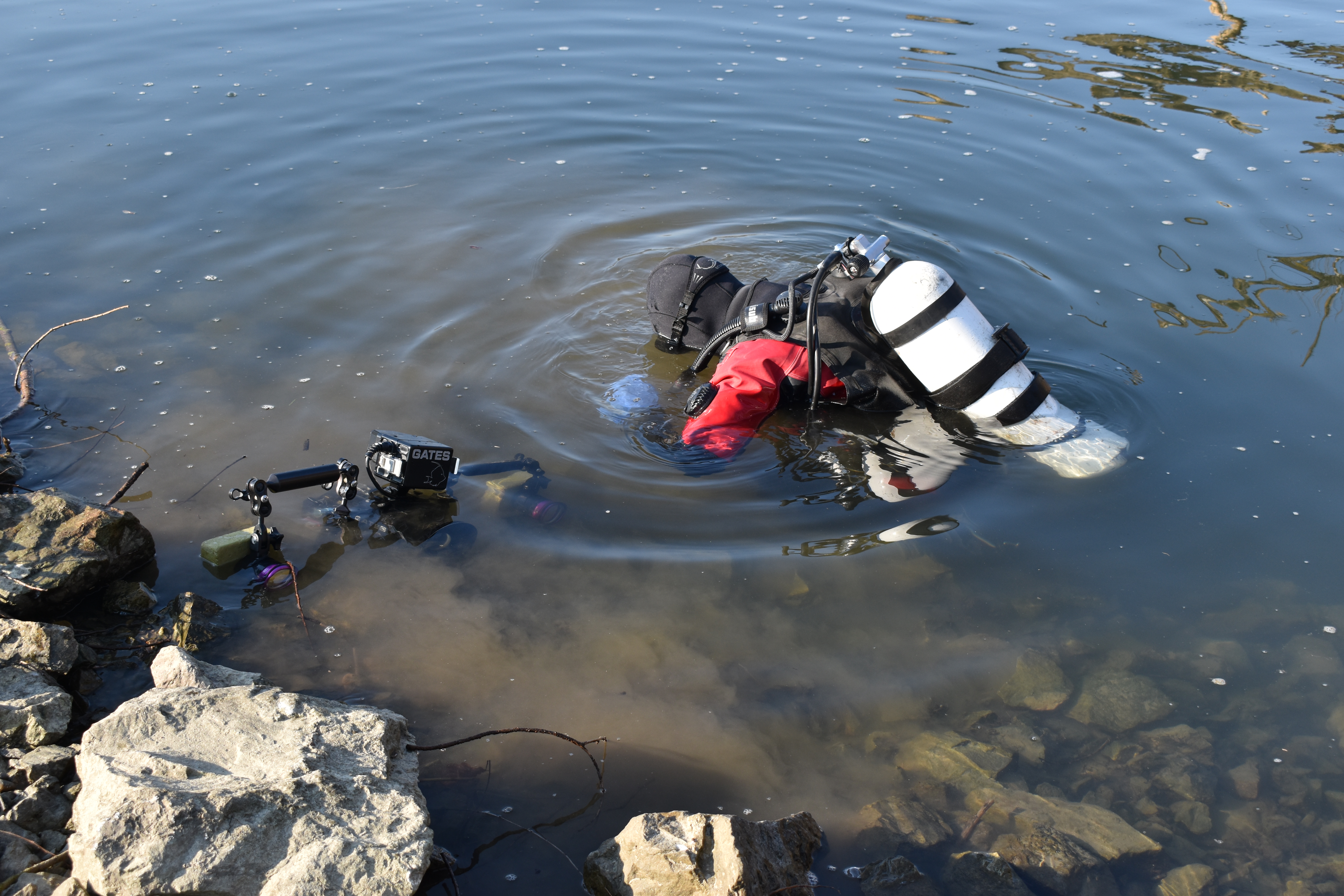
Preparing for the first dive in Mura River (Horvat, 2020)
In science, we call the chosen method an underwater visual census (UVC) and we enlisted the help of Ciril Mlinar, the most experienced Slovenian underwater filmmaker with an impressive list of dives in caves, siphons, lakes, rivers, the sea and practically any shape of water body. His experience was essential, because diving and surveying 4 different pools in Mura River in the beginning of January was no easy job. The water temperature in the 4-8 m deep pools was 2-3°C, but that was not the biggest problem for the diver, used to the cold water and diving in total darkness. The main threat for the diver were the strong currents, coming in waves from different directions and especially (too many) obsolete fishing lines with hooks, a reminiscent of the irresponsible recreational fishing. These hooks and lines are now wrapping around the sunken trees and between rocks, creating an invisible trap for anything flowing with the current, including our diver. For this reason he had to be extremely careful not to get entangled himself or any part of the equipment that he used. In addition to all the diving equipment, he also carried a heavy underwater camera with two strong lights to illuminate the murky river waters. The effects of these leftover hooks and lines on fish is not known.
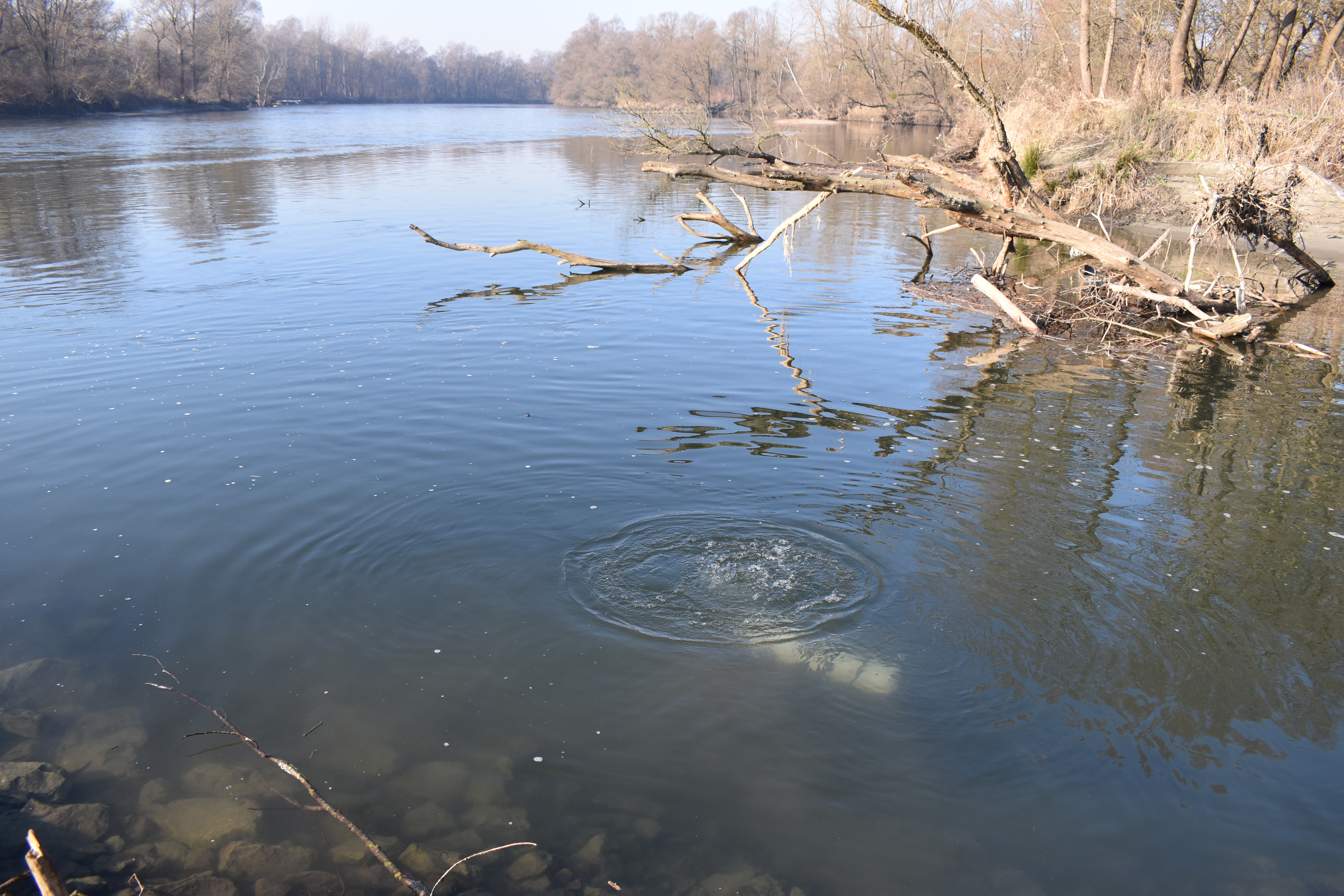
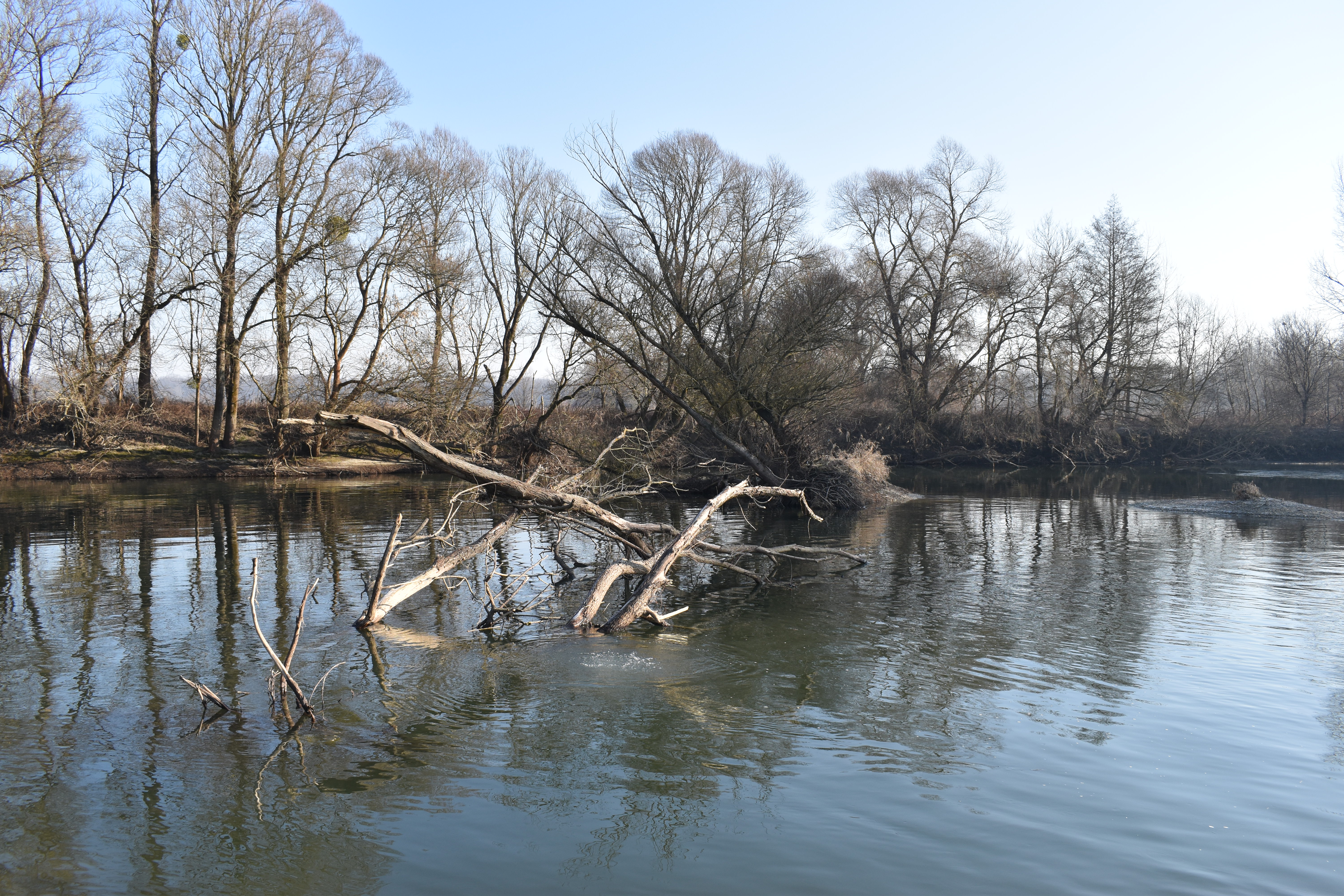
Sunken trees are popular hiding places for fish (Horvat, 2020)
The chosen pools differed in size, depth, substrate and biodiversity, which confirms (some of) our past findings. In the following weeks we will produce a video clip in which you will also be able to see what lies beneath the Mura River surface and how exactly the riverbed looks like.
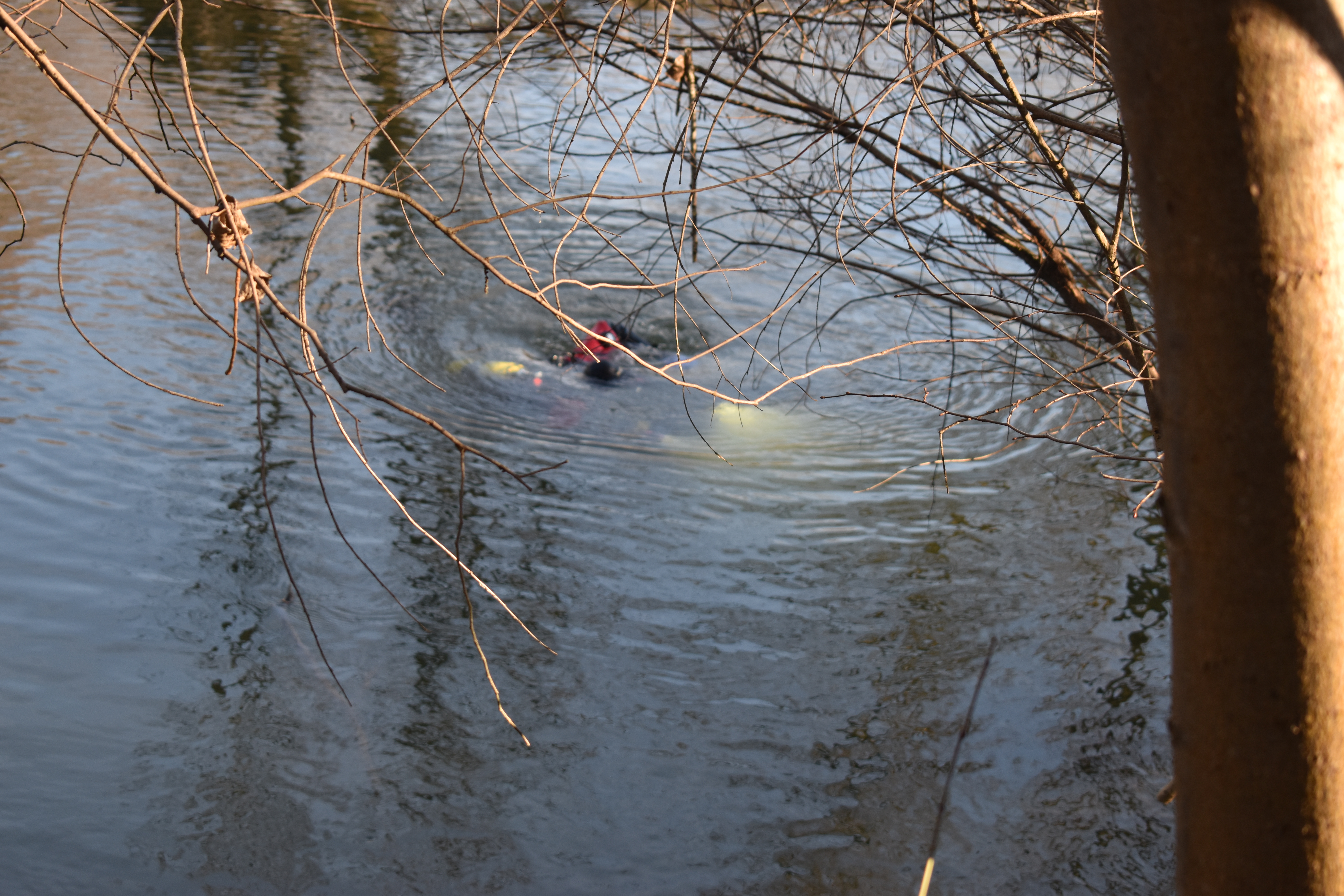
Strong lights had to be used due to low visibility (Horvat, 2020)
We collected important new information about the currents and their velocity in the pools from this field work and a new, fish-eye perspective, since we can actually see the riverbed and their environment. These insights will help us design and plan the next field surveys when we’ll be using nets to confirm sterlet presence in these and many other pools in the Mura and Sava Rivers in Slovenia. In addition, the fish-eye perspective will give us new energy to continue our work in the future and motivation to fight for fish and all the other aquatic organisms.
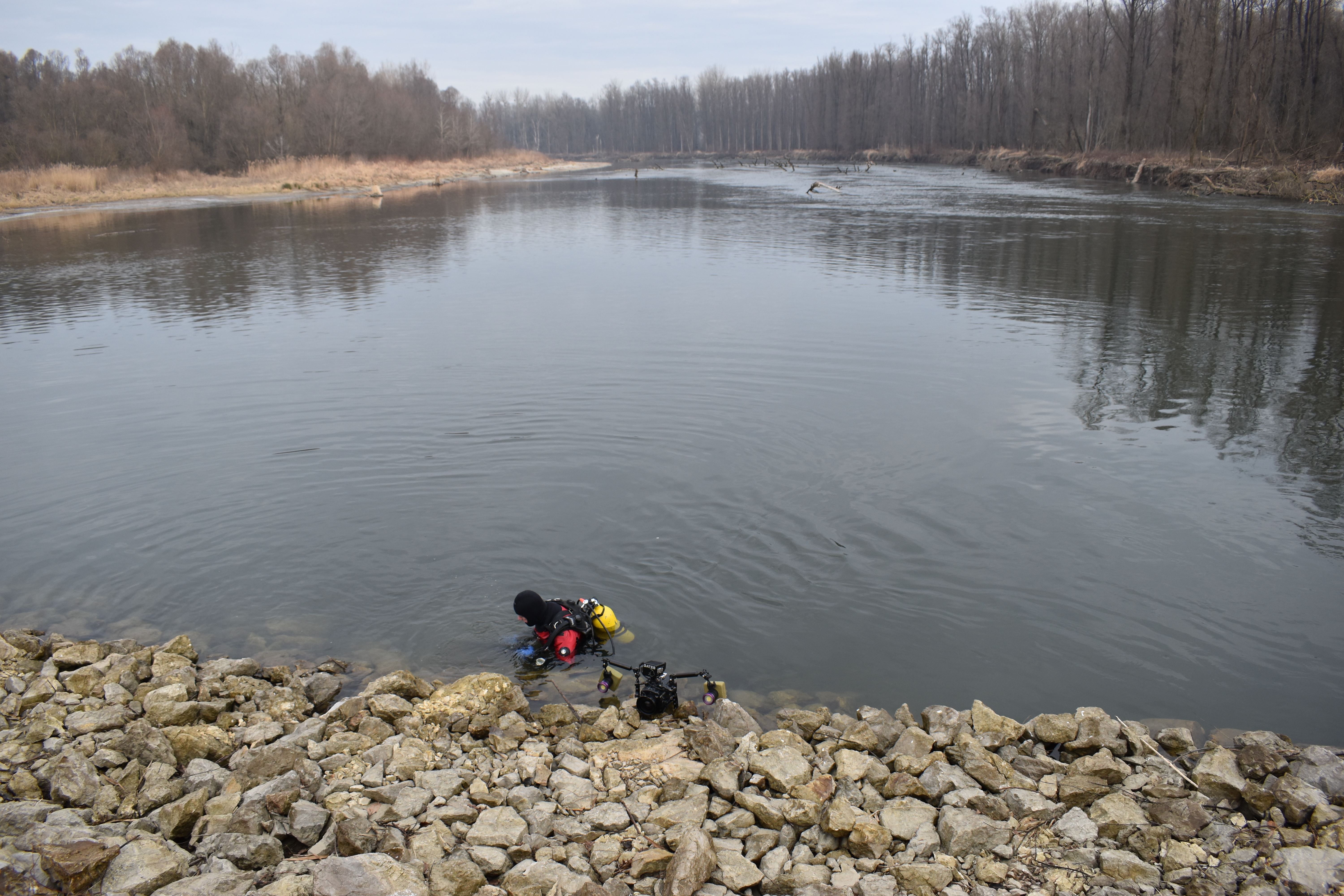
Large pools exceeding 8 meters in depth were also surveyed (Horvat, 2020)
Therefore, you can expect to hear more about the species we find and the net sampling we do on the Mura and Sava Rivers in the following months.
